Charming and friendly birds, Cockatiels have long been popular pets among bird enthusiasts and families. These delightful creatures are known for their beautiful crest, distinctive colourations, and ability to mimic sounds and even words.
However, with their unique physical traits, cockatiels also exhibit a range of intriguing behaviours that captivate novice and experienced bird owners.
One such behaviour is beak tapping, which often piques the curiosity of those who observe it. “Why do cockatiels tap their beaks?” is a question that has puzzled many bird lovers.
Understanding the reasons behind this behaviour is fascinating and crucial for providing these intelligent creatures with optimal care and enrichment.
In this article, we will explore the factors contributing to cockatiels tapping their beaks, shedding light on the significance of comprehending their behaviour for their overall well-being.
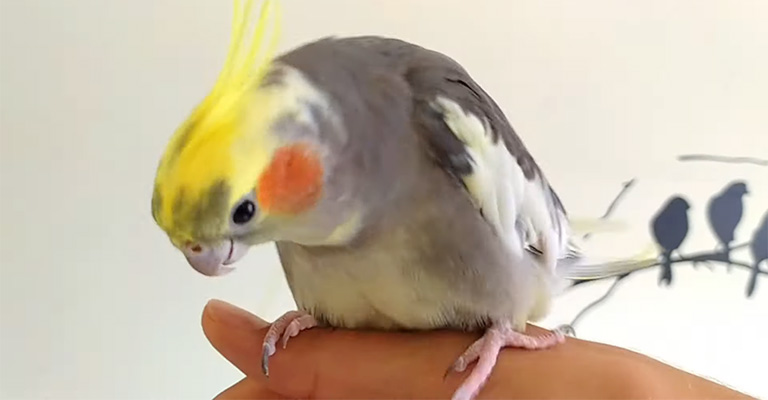
Why Do Cockatiels Tap Their Beaks?
Cockatiels engage in beak tapping for various reasons, reflecting their complex behavioural repertoire. By tapping their beaks, these avian companions communicate, bond with their owners, participate in courtship rituals, seek self-soothing, and exhibit feeding behaviour.
Communication And Social Behaviour
Beak tapping is a means of communication between cockatiels and their human companions. It allows them to convey various messages, including greetings, warnings, or requests for attention.
Cockatiels may tap their beaks to establish a social hierarchy, express affection, or initiate interactions with other birds or their owners.
Bonding With Their Owners
Beak tapping is also a way for cockatiels to strengthen their bond with their owners. By tapping their beaks on a person’s hand or finger, they establish physical contact and seek attention and affection.
This behaviour demonstrates trust and a desire for social interaction, allowing for a deeper connection between the bird and its owner.
Courtship And Mating Behaviour
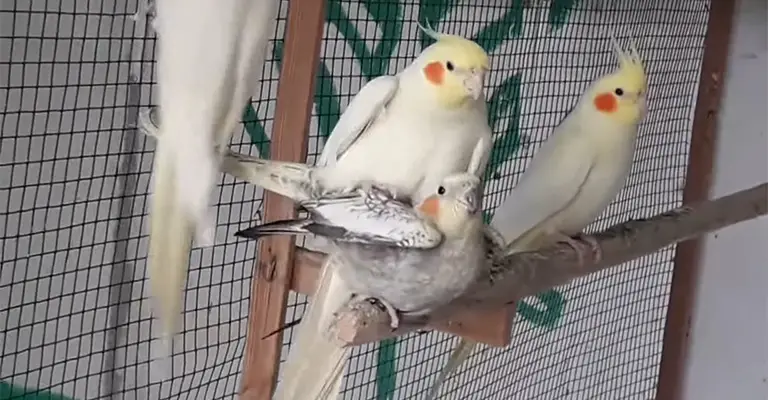
Beak tapping plays a vital role in cockatiel behaviour during courtship and mating. Male cockatiels often tap their beaks as part of their courtship display to attract a mate.
This behaviour is accompanied by other actions, such as head bobbing, wing spreading, and singing. Additionally, beak tapping may indicate dominance or interest when two cockatiels interact during mating rituals.
Self-Soothing Or Stress Relief
Beak tapping can function as a self-soothing mechanism for cockatiels, helping them cope with anxiety or boredom. These birds may tap their beaks in stressful situations or unfamiliar environments to comfort themselves and alleviate tension.
This behaviour provides a sense of security and helps them adapt to new surroundings more easily.
Feeding Behaviour
Cockatiels have an instinct for foraging and cracking open seeds in the wild. Beak tapping can mimic this behaviour, especially when presented with food.
Cockatiels simulate breaking seeds or chewing food by tapping their beaks on objects or surfaces, satisfying their feeding instincts and providing mental stimulation.
Understanding the multiple functions of beak tapping allows bird owners to accurately interpret their cockatiel’s behaviour.
It is important to note that individual cockatiels may exhibit variations in beak tapping patterns and motivations based on their unique personalities, environment, and social interactions.
By observing their cockatiel’s behaviour and context, owners can gain insights into their feathered companion’s needs and preferences, contributing to a more enriching and fulfilling relationship.
When Do Cockatiels Tap Their Beaks?
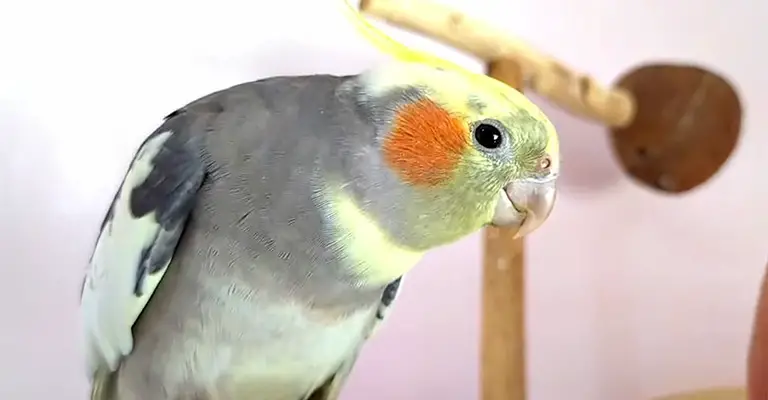
Beak tapping is a behaviour cockatiels engage in under various circumstances and at different times of the day. By observing their beak-tapping patterns, we can gain insights into their daily routines, communication needs, and responses to their environment.
Morning And Evening Routines
Cockatiels often tap their beaks as part of their morning and evening routines, signalling the start or end of their active periods. In the morning, they may wake up and stretch their bodies, accompanied by gentle beak tapping.
This behaviour helps them loosen their muscles and prepare for the day ahead. Similarly, during their pre-sleep behaviour in the evening, cockatiels may tap their beaks as they wind down and prepare for rest.
Interaction With Humans
Cockatiels are social birds that thrive on interaction with their human companions. Beak tapping can serve as a form of communication during these interactions. When a cockatiel seeks attention or desires interaction, it may tap its beak to get noticed.
This behaviour is often accompanied by other gestures, such as head bobbing or crest raising, which further convey their eagerness to engage with their human caregiver.
On the other hand, if a cockatiel feels uncomfortable or annoyed during human interaction, they may tap their beak to express their displeasure.
Environmental Factors
Cockatiels are compassionate creatures, and environmental changes can trigger beak-tapping behaviour. When encountering new objects or alterations in their surroundings, they may tap their beaks to investigate and familiarize themselves with these changes.
This behaviour demonstrates their natural curiosity and desire to explore their environment. Additionally, cockatiels may exhibit beak tapping during specific times of the day or seasonally, possibly influenced by factors such as daylight cycles or temperature variations.
Courtship And Mating Season
Beak tapping plays a significant role in cockatiels’ courtship and mating behaviour. During the breeding season, male cockatiels may tap their beaks to attract a potential mate.
This behaviour, accompanied by other courtship displays such as wing spreading and vocalizations, allows male cockatiels to demonstrate their availability and interest.
Female cockatiels may also beak tapping as a response, signalling their receptiveness to the male’s advances.
How Do Cockatiels Tap Their Beaks?
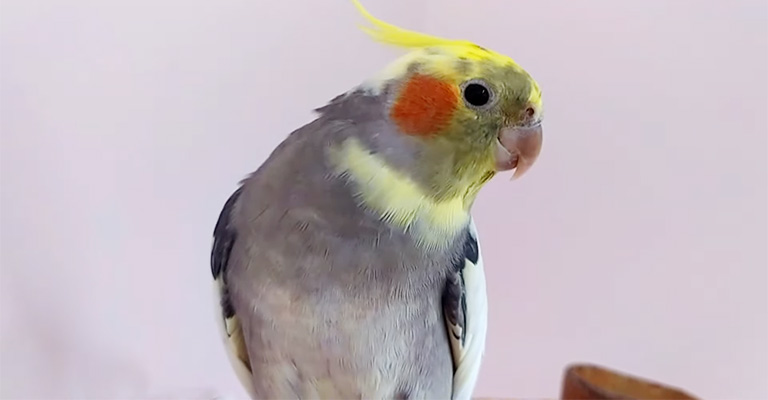
Beak tapping is a unique behaviour exhibited by cockatiels that serves various purposes. Understanding how cockatiels engage in this behaviour can provide insights into their communication and emotional state.
In this section, we will explore the physical aspects of beak tapping and cockatiels’ accompanying body language and behaviours.
Physical Aspects Of Beak Tapping:
Rhythm and Speed of Tapping
Cockatiels tap their beaks with a distinctive rhythm and speed. The tapping can range from quick and repetitive to slow and deliberate. The rhythm and rate of beak tapping may vary depending on the context and the bird’s intention behind the behaviour.
Observing the pattern of beak tapping can provide valuable information about the cockatiel’s mood or purpose.
The Sound Produced During Beak Tapping
Beak tapping is often accompanied by a distinct clicking or tapping sound. The sound is created as the upper and lower beak repeatedly come into contact. The intensity and volume of the sound may vary based on the force the cockatiel applies.
This auditory component adds another layer to the communication. It can attract the attention of other birds or humans nearby.
Body Language And Accompanying Behaviours:
Head Bobbing or Crest Raising
Cockatiels often display specific head movements while tapping their beaks. Head bobbing is a standard behaviour observed in cockatiels, where they rhythmically move their heads up and down. This head bobbing can be synchronized with beak tapping or performed independently.
Additionally, the crest on the cockatiel’s head, which can be raised or lowered, may also play a role in signalling their emotions or intentions during beak tapping.
Wing Spreading or Tail Flicking
Some cockatiels may accompany beak tapping with wing spreading or tail flicking. Wing spreading involves the cockatiel extending its wings outwards and slightly away from its body.
This behaviour can serve as a display of dominance, territoriality, or courtship. Tail flicking, on the other hand, refers to the rapid movement or flicking of the tail feathers. It can be a sign of excitement, arousal, or aggression, depending on the context in which it occurs.
Where Do Cockatiels Tap Their Beaks?
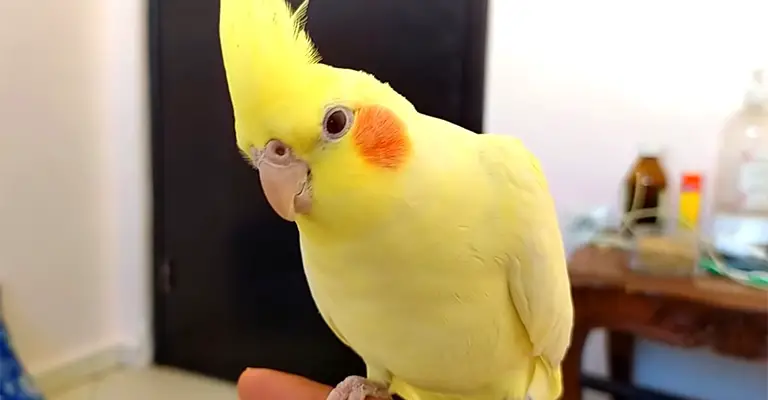
Beak tapping is an intriguing behaviour exhibited by cockatiels, and understanding where they engage in this behaviour can provide valuable insights into their preferences and needs.
Observing their location preferences can create an enriched environment that promotes their natural behaviours and overall well-being.
Location Preferences For Beak Tapping:
Cage or Enclosure:
Cockatiels often tap their beaks within the confines of their cages or enclosures. The cage serves as their safe space and territorial boundary, where they feel secure enough to engage in various behaviours, including beak tapping. It allows them to have a sense of control over their surroundings.
Perches or Play Areas
Cockatiels also exhibit beak-tapping behaviour on their perches or designated play areas. These spots offer them opportunities for physical exercise, exploration, and interaction.
Beak tapping on nests may serve to establish their territory or simply as a form of self-expression and enjoyment.
Near Food and Water Sources
Another common location for beak tapping is near their food and water sources. Cockatiels may tap their beaks as a means to crack open seeds, chew their food, or even as a way to communicate their hunger or satisfaction.
It is essential to ensure that these areas are easily accessible and provide a comfortable space for them to engage in these behaviours.
Influence Of The Environment On Beak Tapping Behaviour:
Cage Setup and Enrichment
How the cage is set up can significantly influence a cockatiel’s beak-tapping behaviour. A spacious cage with appropriate perches, toys, and interactive objects encourages them to engage in natural behaviours, including beak tapping.
Different textures, such as wooden perches or chewable toys, can stimulate their beak and promote healthy beak maintenance.
Access to Toys and Interactive Objects
Toys and interactive objects are crucial in a cockatiel’s environment, providing mental stimulation and physical engagement. Cockatiels may tap their beaks on toys to explore their textures, test their durability, or simply as a form of play.
Offering a variety of toys, such as bells, mirrors, or puzzle toys, allows them to satisfy their natural curiosity and provides an outlet for beak-tapping behaviours.
By considering cockatiels’ location preferences and providing an enriching environment, we can ensure they have ample opportunities to engage in beak tapping. This behaviour is essential for their physical and mental well-being.
Offering an appropriate cage setup, access to perches, and a variety of toys not only encourages natural behaviours but also helps prevent boredom and potential behavioural issues that may arise from a lack of stimulation.
Understanding and catering to their environmental needs allow us to create a harmonious space where cockatiels can thrive and express themselves through their fascinating beak-tapping behaviour.
Frequently Asked Questions
Yes, beak tapping is a normal behaviour exhibited by cockatiels. It is a natural part of their communication and interaction repertoire.
Excessive beak tapping can sometimes indicate stress or discomfort. Evaluating the bird’s overall behaviour, diet, and environment is essential to identify any potential issues. If you are concerned, it is recommended to consult an avian veterinarian for guidance.
Beak tapping, when performed gently, does not cause harm to the bird. However, suppose a cockatiel engages in aggressive beak tapping or repeatedly taps its beak against hard surfaces. In that case, it may lead to beak injuries. Providing appropriate toys and objects for them to tap on can help redirect this behaviour and prevent potential harm.
Yes, beak grinding is another behaviour often associated with beak tapping. Beak grinding is a rhythmic motion where a cockatiel rubs its upper and lower beak together. It is often observed when a cockatiel is relaxed and content, particularly during sleep. Beak grinding and tapping can go hand in hand as expressions of comfort and well-being.
Beak tapping is a natural behaviour, and it is unnecessary to discourage it unless it becomes excessive or aggressive. However, you can provide your cockatiel with various toys, perches, and objects to tap on, enriching their environment and providing appropriate outlets for their beak-tapping behaviour.
Conclusion
Beak tapping is a fascinating behaviour exhibited by cockatiels, serving various purposes such as communication, exploration, courtship, territorial marking, and emotional expression.
Understanding the reasons behind this behaviour helps us better comprehend the complex world of these delightful birds.
Observing and appreciating their beak-tapping behaviour can strengthen our bond with these intelligent and charming companions.